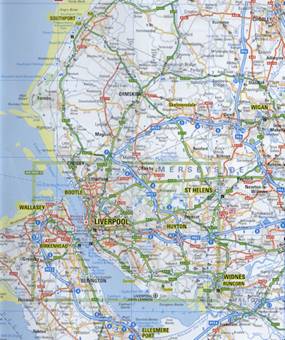 Sefton Sands stretch from the Port of Liverpool to the mouth of the River Ribble. During the twenty five years that I worked in the North West of England I often visited Liverpool and Southport and some of the places inland between the two but it was only after my wife and I had retired that we decided to walk the Sefton Trail by making a series of day trips plus one overnight stay. As the pictures will suggest, this was done at different times of the year and not in the order suggested by the sections described below. This was mainly because the three best places to start a walk from are the Marine Lake at Waterloo, near to Anthony Gormley’s art installation ‘Another Place’, the National Trust Reserve at Formby and the seaside resort of Southport.
Sefton Sands stretch from the Port of Liverpool to the mouth of the River Ribble. During the twenty five years that I worked in the North West of England I often visited Liverpool and Southport and some of the places inland between the two but it was only after my wife and I had retired that we decided to walk the Sefton Trail by making a series of day trips plus one overnight stay. As the pictures will suggest, this was done at different times of the year and not in the order suggested by the sections described below. This was mainly because the three best places to start a walk from are the Marine Lake at Waterloo, near to Anthony Gormley’s art installation ‘Another Place’, the National Trust Reserve at Formby and the seaside resort of Southport.
The map of the area (above) shows how the sands follow the curve of the northern shore of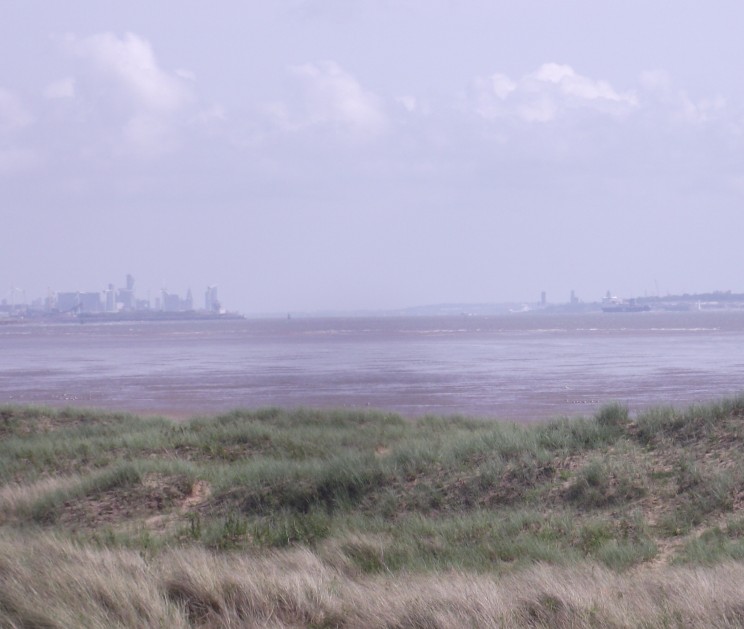 the Mersey Estuary and the first picture shows the mouth of the river Mersey with Liverpool to the left and Birkenhead to the right. The southern end of the trail starts start immediately to the west of the entrance to the Royal Seaforth Docks at Waterloo, where there is parking at the Marine Lake. Antony Gormley’s ‘Another Place’, which is just over the dunes, consists of 100 figures (life size casts of the artist – see picture below) positioned along a 3 kilometre stretch of
the Mersey Estuary and the first picture shows the mouth of the river Mersey with Liverpool to the left and Birkenhead to the right. The southern end of the trail starts start immediately to the west of the entrance to the Royal Seaforth Docks at Waterloo, where there is parking at the Marine Lake. Antony Gormley’s ‘Another Place’, which is just over the dunes, consists of 100 figures (life size casts of the artist – see picture below) positioned along a 3 kilometre stretch of 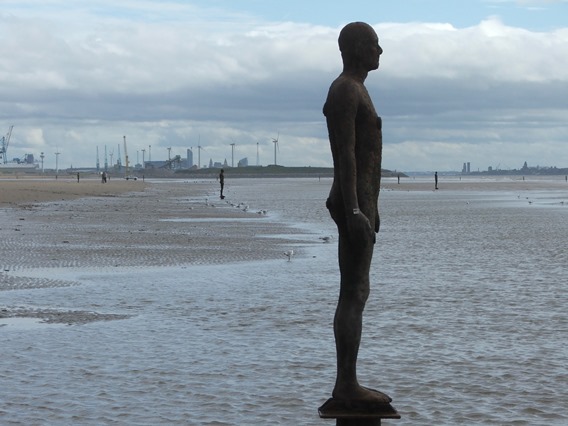 the Crosby beach some of which are up to 1 kilometre from the shore The first part of the walk from its eastern end is along a promenade that ends at Crosby near to the Coastguard Station. The North Coast of Wales can be seen across the mouth of the Estuary, which is fed by the Rivers Dee and Mersey. Liverpool is still a major British seaport and the walk offers plenty of opportunity to observe sea traffic. Between Crosby, from
the Crosby beach some of which are up to 1 kilometre from the shore The first part of the walk from its eastern end is along a promenade that ends at Crosby near to the Coastguard Station. The North Coast of Wales can be seen across the mouth of the Estuary, which is fed by the Rivers Dee and Mersey. Liverpool is still a major British seaport and the walk offers plenty of opportunity to observe sea traffic. Between Crosby, from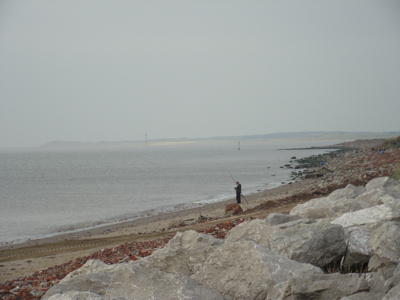 where this picture was taken, and Formby Point (seen in the distance) is the bay formed by the River Alt, which has been diverted eastwards to accommodate Altcar Rife Range, and the trail goes inland for a mile or so. The walk continues west towards Formby, over the River Alt and past the Yacht Park at Hightown Village.
where this picture was taken, and Formby Point (seen in the distance) is the bay formed by the River Alt, which has been diverted eastwards to accommodate Altcar Rife Range, and the trail goes inland for a mile or so. The walk continues west towards Formby, over the River Alt and past the Yacht Park at Hightown Village.
The National Trust reserve at Formby includes both part of Sefton Sands and a pine wood that is home to Red Squirrels. Formby beach (seen below left) is popular for 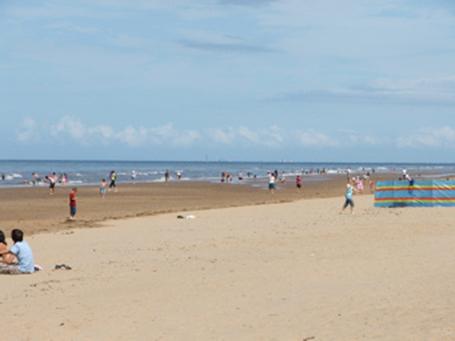 sea and sunbathing but Ainsdale, which is between Formby and Southport, is used as a base for water sports such as wind surfing. From Ainsdale the beach appears to widen dramatically, as the shore line curves inland towards the mouth of the River Ribble. This creates large areas of marsh land where skylarks and other birds nest and feed and there are many wild flowers. At Southport the build-up of sand means that the tide seldom comes in. The pier, built in the
sea and sunbathing but Ainsdale, which is between Formby and Southport, is used as a base for water sports such as wind surfing. From Ainsdale the beach appears to widen dramatically, as the shore line curves inland towards the mouth of the River Ribble. This creates large areas of marsh land where skylarks and other birds nest and feed and there are many wild flowers. At Southport the build-up of sand means that the tide seldom comes in. The pier, built in the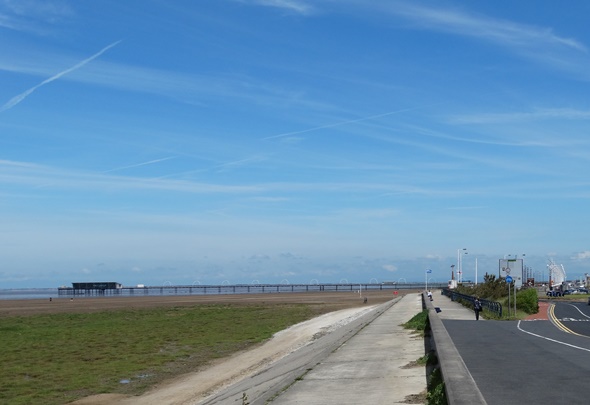 1860s had to be long enough to reach open water.
1860s had to be long enough to reach open water.
Looking north from Southport, the famous Lancastrian Resort of Blackpool, with its Tower, is a prominent feature across the estuary. The RSPB Marshside Reserve on Marine Drive, Southport and the Wildfowl and Wetland Trust reserve at Martin Mere a few miles inland from the road between Southport and Preston are places that can enhance a visit to the Sefton Sands.
